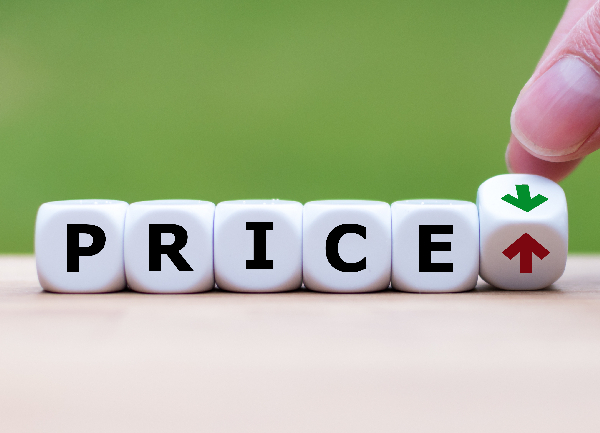By Dave Hickey FCA
The fastest and most effective way for a company to maximise profit is to get its pricing right. The right price can boost profit faster than increasing volume will; the wrong price can shrink it just as quickly.
Yet many otherwise tough-minded managers shy away from initiatives to improve price for fear that they will alienate or lose customers. This is particularly true now, when all businesses are under increasing cost pressure and may be more sensitive to price increases. If we increase our prices will our customers leave us for a lower-priced competitor – no matter the quality or value?
The result of not managing price performance, however, is far more damaging. Getting the price right is one of the most fundamental and important management functions; it should be one of a manager’s first responsibilities, a nuts and bolts kind of job that determines the financial performance of the business.
When it comes to putting a price tag on the final product, it’s not uncommon for leaders of small and medium-sized businesses to miss the importance of spending time to figure out the right pricing model. Sometimes pricing becomes more of a reflection of their costs, or competitors’ pricing than a function of how to strategically increase the profitability of their own business.
Pricing is the Key to Increasing Profits
Unfortunately, many business owners simply don’t realize that pricing is, in fact, THE most vital component when it comes to making money.
Price your items poorly, and you’re leaving money on the table. Price your items well, and you’ll beat out your competition without diminishing the perceived quality of your brand.
How much do you think a 10% increase can mean to your bottom line? Let’s take a look at a quick example. When all else is equal if you have 10% profit and there’s no change in expenses, a 10% bump on a €100 revenue stream that has €90 in expenses will double your profits, assuming you don’t lose any clients.
On the other hand, getting a 10% revenue increase purely by growing volume usually takes longer and produces a lower financial benefit, depending on your gross margin.
Sounds simple, right? Of course, if the profitability equation was truly that effortless, it wouldn’t be a problem for any business. But, as we all know, breaking the barrier between the red and black is far from an uncomplicated feat.
There are many ways to evaluate your current pricing and identify potential for increases in all or some of your products or services. The most widely used are:
- Value Pricing
- Target Gross Margin Pricing
- Cost Plus Pricing
Each has its own merits and there may be variations of one which suit your business best.
The key point of this short article is that business leaders should actively consider their pricing strategy at least every year as part of a thorough budgeting process. It’s often neglected and opportunities to increase profitability are missed.
A former colleague insisted that prices be increased by a small amount every year, arguing that even 1% more per unit sold went straight to the bottom line and helped the business deal with increased costs.
Financial Intelligence
So how do you optimise your pricing model to increase your company’s profitability? You turn to your management reports and look at the data.
Good financial intelligence from management reports helps CEOs figure out if they are pricing their jobs right, and also to help business owners to really understand who their most profitable clients are, and what makes them profitable.


